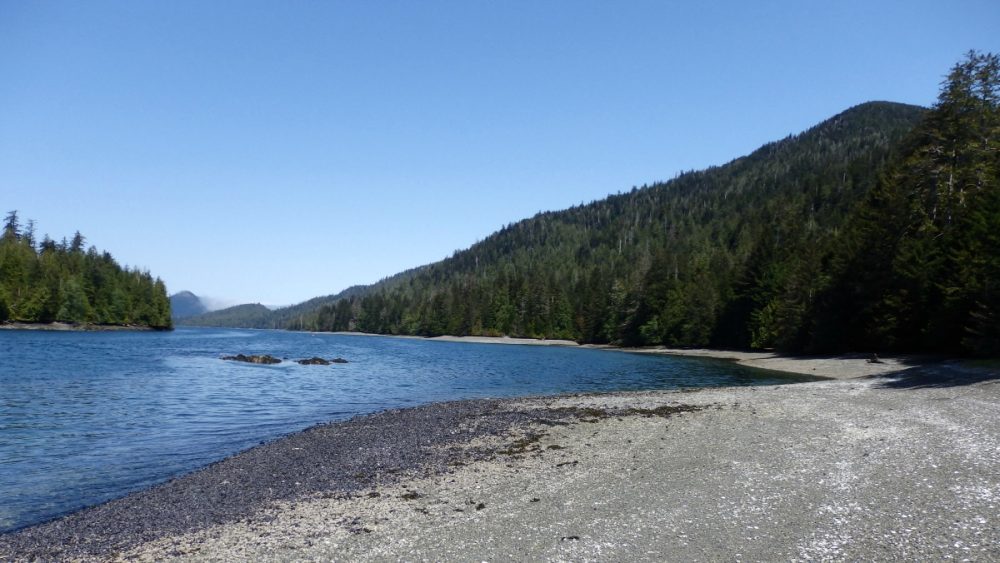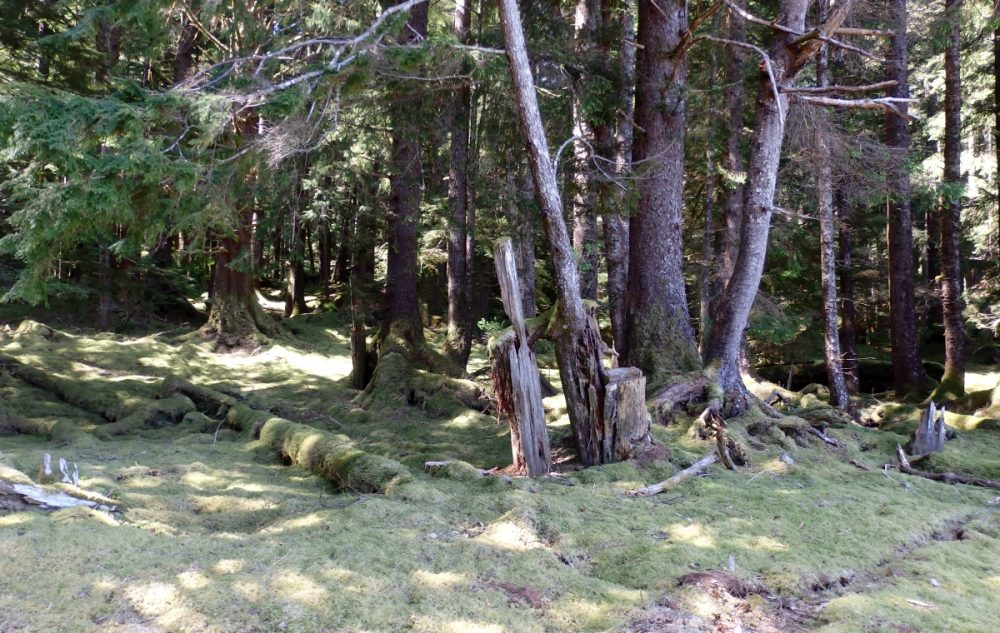Ground Truthing
In the world of Remote Sensing, one of the key concepts is ground truthing. This has both a positional component, as well as a field verification of the land cover. These complementary activities are important in the classification of satellite imagery. With new sensors and camera systems deployed in aircraft and UAVs, the “on the ground” component has become even more critical. For example, the monitoring of invasive species and their impact on the ground cover.
In the North Coast region of British Columbia, Denholm has recently published a book on ground truthing which offers a very different perspective: “My own version of ground truthing will look closely and at a studied distance at the tripartite relationship that exists between North Coast rainforests, their diverse groups of First Nations people’s, and the recently arrived populations of industrial Canadian society” (p. 12). Denholm considers truth from the three perspectives of the Indigenous Rainforest, First Nations and new Canadians.
Another perspective on ground truth can be discerned from Kathleen Dalzell’s three volume set on the Queen Charlotte Islands (Haida Gwaii). In her second volume, Places and Names, she has thoroughly located and named approximately two thousand places. And for the Northern end of Graham Island, she has used the Haida names provided by Charles A. Smith.
The positional geography can be related to different naming conventions of the First Nations as well as the settlers. To understand the indigenous rainforests or storied lands, we must spent time within the landscape, observe, and appreciate the ecological processes. Some of these processes are seasonal, others operate over longer time spans like decades or even centuries.
We must also understand the stories if we are to find a common ground. A remarkable resource in this understanding is Ted Chamberlin’s If This Is Your Land, Where Are Your Stories? The title is a quotation from a Gitksan elder.
Denholm makes the case:
“We would do better to slow down, to listen to, and at the very least learn from the histories and cultures of those who have been living here for thousands of years, which include not only the local First Peoples but also the trees, plants, animals, mountains and rivers, the weather and the seasons, all of whom represent and define the important Indigenous and Wild concept of ground truth” (p. 252).
Here is the challenge: When I consider my home in the Annapolis Valley, Nova Scotia, how do I apply these North Coast, BC values to understand my geography? Or, in the words of de Leeuw: “Much of Ground Truthing’s ethical real work is its mapping out of new possibilities, of not yet untapped potentials, of peoples’ real capacity to one day live on this planet like our lives depend on it.”
References
J.Edward Chamberlin. 2003. If This Is Your Land, where Are Your Stories? Finding Common Ground. A.A. Knopf Canada.
Kathleen E.Dalzell. 1968. The Queen Charlotte Islands Volume 1: 1774 – 1966. CM Adam.
Kathleen E. Dalzell. 1973. The Queen Charlotte Islands Volume 2: Places and Names. Harbour Publishing.
Kathleen E. Dalzell. 1983. The Queen Charlotte Islands Volume 3: The Beloved Island. Harbour Publishing.
Sarah de Leeuw. 2015. Back cover of Ground Truthing.
Derrick Stacey Denholm. 2015. Ground Truthing: Reimagining the Indigenous Rainforests of BC’s North Coast. Caitlin Press.











Very interesting article on ground truthing. Yes, we check the “here and now” physical properties of terrain, but often do not do justice to the ground truth of ephemeral properties such as the history and culture of place. I LOVE the title of Ted Chamberlin’s book (borrowed from a Gitksan elder quotation) “If This Is Your Land, Where Are Your Stories?” When we mix story with place then we really are ground truthing, aren’t we?
An interesting commentary, but please don’t use the words “Ground truth’! When I was Editor in Chief of the Third Edition of the Manual of RS a group of us who were prominent in the field at the time decided to attempt to remove the words “Ground Truth” from our collective vocabulary. Indeed, in one glossary what appeared beside the words “Ground truth” was something like “a confusing phrase often used by people new to the field of remote sensing and inexperienced in doing field work to mean ground data.” Use of ground truth implies that “true” information is collected on the ground. This is not always the case. Often it is the information from the imagery that proves to be better or more complete than that collected on the ground.(And of course if you use the words ground – where does that leave information collected on the water?) Far better, I would say to use the words “ground data” or “surface data”, or “verification data”….almost anything that leaves out the word “truth.” By so doing one also avoids issues of a cultural nature for my “truth” may not be the same as someone else’s!
I agree with Bob Ryerson, when you talk literally about ‘ground truth’.
I was struck by Denholm’s efforts at creative non-fiction
to describe the indigenous forests of Northern BC.
I hope readers will check out the references.
Robert, thanks for the kind and enthusiastic article on Ground-Truthing. Indeed, my sense of Ground-Truth is a broad, philosophical approach, one that considers what the wild world provides with its long-term, evolutionary patterns, describing how they are a set of principles, standards and means to which human immigrants (Canadians) must pay much more attention. I do believe there are ecological truths to be discovered in the ecosystems and processes that are happening wherever we might be living, be it northern BC or Nova Scotia. This is about finding a balance between critical thinking, empirical data, and where we chose to stand as people. And for Dr. Ryerson, this is about allowing ecological processes to influence the ethical means by which we interact with and respond as human beings to the world that has been operating successfully and sustainably for many thousands of years.